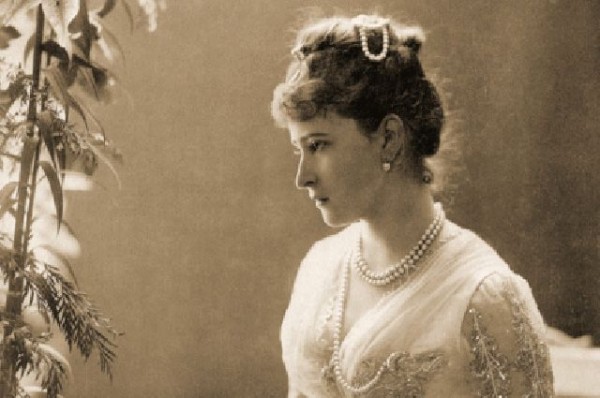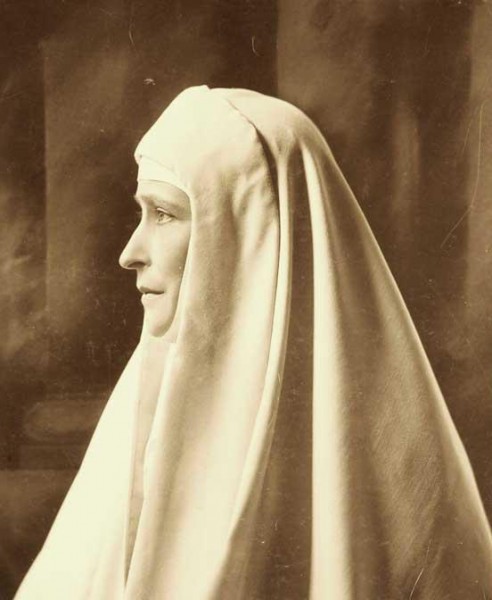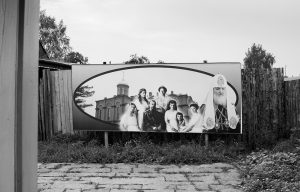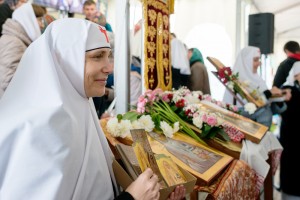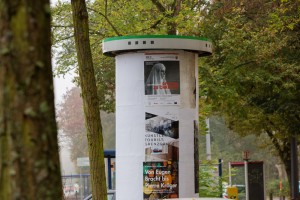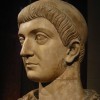The twentieth, cruel and unmerciful century, which is now stands behind humanity, still remains among the years from the Nativity in the flesh of God the Word, remembered from the beginning. The Early Church. The days of youth. Therefore, behold, I will allure her, and bring her into the wilderness, and speak comfortably unto her… for a door of hope: and she shall sing there, as in the days of her youth, and as in the day when she came up out of the land of Egypt… And I will betroth thee unto Me for ever; yea, I will betroth thee unto Me in righteousness, and in judgment, and in lovingkindness, and in mercies. I will even betroth thee unto me in faithfulness: and thou shalt know the Lord. And it shall come to pass in that day, I will hear, saith the Lord, I will hear the heavens, and they shall hear the earth (Hosea 2:14-21).
She, the virgin-Church, deprived of everything and profaned, will sing – this is the shepherd’s pipe of the martyric Early Church, the shepherd’s pipe of martyric witness.
“Newmartyrs,” “neomartyrs” – such are now called those Christians who were killed for the name of Christ. In ancient tradition the word “neos” before a name meant that the same power that, in the opinion of the pagans, in one or another ancient divinity (Zeus, Apollo, Dionysius) was now in a given person, as if “the god had returned.”
In the Byzantine tradition the word “new” was placed before the names of martyrs who had suffered later than their namesake. Christ revealed Himself in the sufferings of His witnesses, martyrs, and witnesses – again and again.
The New Martyrs… are the younger brothers of the martyrs of the Early Church in the times of persecution.
And along with martyrdom was monasticism. It was like an intermingled era, since monasticism was born after, and along with, the cessation of the persecution of Christians, when martyrdom ceased in the Early Church.
Was the Grand Duchess Elizabeth, the founder of the Martha-Mary Convent a nun? A careful examination of the documents carried out by Lubov Karpycheva indicates that she was not. She wanted to accept monasticism, wanted to go into reclusion, leaving her labors to another superior. But she did not go into reclusion – where, in bloodless monastic labor, monastics strive to fulfill the witness of the ancient martyrs – but rather followed the path of secret witness for Christ unto blood.
Were the Great Cappadocians monks? Neither Basil the Great, nor Gregory the Theologian, nor Gregory of Nyssa were monks in our understanding of the term. However, their labors inspired and inspire monks and those wishing to set off on this path.
Basil the Great, using his own funds, opened the first xenodochium in Cappadocia, a clinic for the poor. “The hungry are dying,” cried out the ascetic and mystic, the author of a monastic typicon. He cared about those who were suffering. His faithful friend Gregory used his rhetorical gifts in order to convince wealthy citizens to donate to help the afflicted.
“Not being a nun in the proper sense of the word she, better than many nuns, fulfilled the great commandment of St. Nilus of Sinai: ‘Blessed is the monastic who venerates everyone as a god after God’” (Metropolitan Antastassy).
People condemned her, accusing her of secret Protestantism. Bishop Hermogenes of Saratov was categorically opposed to the “innovations” that she undertook. Indeed, the Grand Duchess Elizabeth relied on the large experience of social service that was being developed at that time among Western Christians.
She studied Western Christian authors who were engaged in the development of the spiritual foundations of ministries of charity, such as Vincent de Paul and Teresa of Avila. The Grand Duchess carefully studied the statutes of organizations such as evangelical deaconesses, as well as Anglican and Roman Catholic sisterhoods that were engaged in charitable works.
She made a profound study of the life of the deaconesses of Kaiserswerth, a French Roman Catholic association, as well as the activity of the “Little Sisters of Love” in London. It is no accident that the British Diplomat, Sir Samuel Gohar, having shared the experience of the Martha-Mary Convent, remarked that it reminded him of an “Anglican sisterhood” (Subdeacon Nicholas Ton).
Indeed, the creative appropriation of what the Western world had to offer was always characteristic of Russia, of Russian culture. The Grand Duchess – whom evil tongues called a “German” and an “Englishwoman,” who was the beloved granddaughter of Queen Victoria – had a Russian soul.
It is no accident that the residents of the Moscow “slum,” Khitrovka, called her “Sister Elizabeth” or “Matushka” – while the police warned her nevertheless that her safety could not be guaranteed in Khitrovka. But she was not killed in Khitrovka… She knew that her life was not in the hands of the police, but in the hands of Christ.
The activity of the Martha-Mary Convent “set as its goal the labor of the sisters, as well as other possible means, in accordance with the spirit of true Christianity, to help the sick and poor and to provide support and comfort to the afflicted and those who abide in troubles and suffering.”
The interior of the convent was dominated by the color white and light colors. The sisters wore long white dresses and white wimples made especially for them, reminiscent of the apparel of St. Elizabeth of Thuringia. This color reminds us now of the white robes that Christ’s martyrs received – thus it happened in the twentieth century, when those who yearned for martyrdom for Christ, such as the Hieromartyr Benjamin, had their joy fulfilled….
True monasticism and true martyrdom: such was the image of the Venerable Martyr Elizabeth’s ascetic struggle. She was close to her sisters, as was the founder of one of the first women’s monasteries, St. Macrina, the sister of Basil the Great and Gregory of Nyssa. Like St. Macrina, she did not see her sisters as slaves or serfs. She always took the most difficult work upon herself: spending the night with the dying, assisting in difficult operations, persuading impoverished parents to give over their children for care, that they not be sucked into the terrible whirlpool of Khitrovka – as well as sorting out potatoes with a sister whom all refused to help.
It should be noted that the Venerable Martyr Elizabeth always acted very soberly towards the wishes of the girls and women who joined her sisterhood. They gave a vow of celibacy for a time, but could leave the convent and get married. In such a case, the sister received a dowry from the convent and was well provided for – something incredible for us, but which clearly demonstrates the Grand Duchess Elizabeth’s concern for young girls. She not only did not want to damage the fate of the girls who came to serve Christ and neighbor, but she refused to commit them to nighttime prayers, knowing how heavily overloaded they were during the day.
Much has been said and written concerning the Venerable Martyr Elizabeth’s concern for the suffering, but one should not forget her love for her assistants and sisters who worked under her leadership. Her maternal love suffered all. She did not make a name for herself, she did not let the sisters work themselves to death, and did not announce any “special ascetic struggles,” although she secretly wore both a hair shirt and chains.
For her, the path to Christ was “a road full of light”: and she beheld the light of Him Himself, in secret martyrdom, the crowning achieving of every Christian on earth.
Translated from the Russian.












